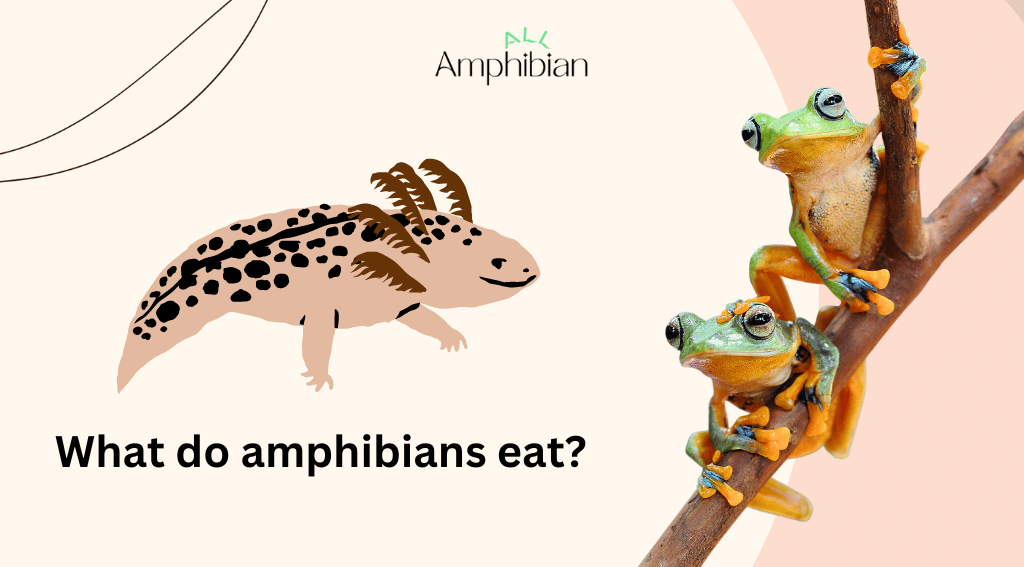Amphibians are an interesting species of semi-aquatic animals that have unique characteristics. If you are interested in amphibians, join us at All Amphibian to tell you what amphibians eat.
What do amphibians eat?
Amphibians are an interesting species of animals whose life has two stages. They are semi-aquatic, but they start their life in water and in the first stage of their life, they are aquatic. During this period, they are omnivorous and feed mostly on plant material and pieces of aquatic plants. In the future, their body undergoes drastic changes.
Their hands and feet appear, and their lungs are complete, and they can live on land. After reaching maturity, they can enter land and feed on small live animals until the end of their lives and are carnivores. Most amphibians go through these stages, but there are exceptions among them, which we will mention below.
But to know what amphibians eat, we must examine each species separately because they may have a different diet. Frogs and salamanders are the two main families of amphibians, and we will discuss their diet below.
What do salamanders eat?
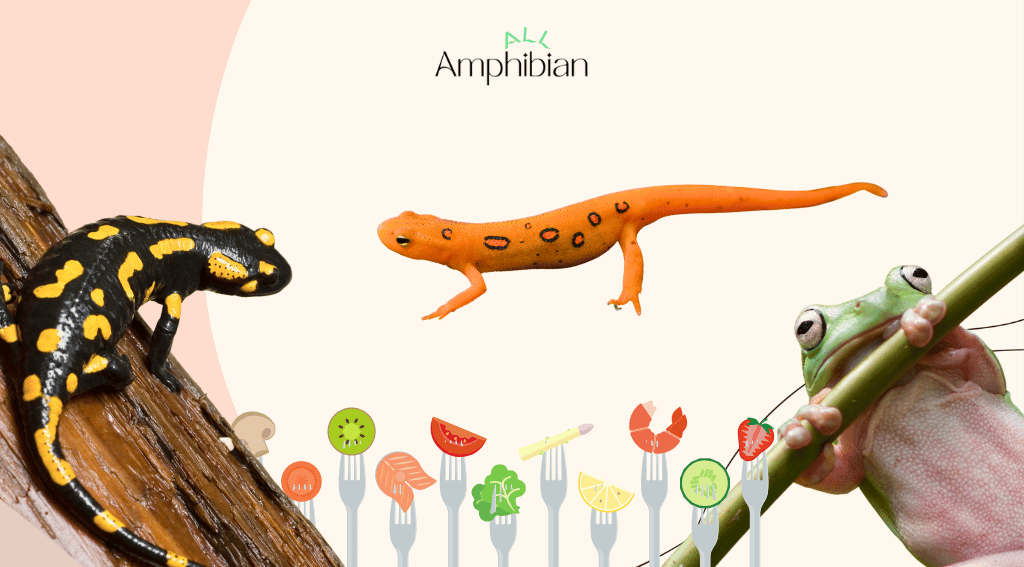
Salamanders are one of the species of amphibians that can be found in both aquatic and terrestrial species. These two species have many similarities with each other. They are oviparous and lay their eggs in water and moist environments. Salamander larvae start their life in water, and after reaching maturity, some of them leave the water, and some others live in the water all the time.
- Terrestrial salamanders:
Salamanders that leave the water and live on land after maturity are carnivores. They feed on insects, worms, spiders, small vertebrates, mollusks, etc. Terrestrial salamanders have hands and feet for walking. They hunt almost any living creature that fits in their mouth. In rare cases, some terrestrial salamander species eat carrion, but most do not feed on dead animals.
Terrestrial salamanders hunt using their long and sticky tongues, and some species also follow their prey and catch it with their mouths. They have small teeth unsuitable for chewing and cutting, so they swallow their prey whole. Terrestrial salamanders in captivity are fed with foods such as bloodworms, earthworms, brine shrimp, etc. They need to eat every two or three days, and you should not overfeed them because it will cause digestive problems. You should also not give them fruits and vegetables because they cannot digest them, which is dangerous.
- Aquatic salamanders:
Some species of salamanders that always live in water are omnivores, but most are carnivores. Their diet consists of small living organisms such as snails, mosquito larvae, worms, small fish, etc. Some also feed a small amount of algae and pieces of aquatic plants.
They do not feed on the remains of dead organisms. Due to their poor eyesight, aquatic salamanders cannot see anything that does not move. So they eat any living thing that moves and fits in their mouth. Aquatic salamanders do not have sticky and long tongues for hunting.
They hunt by using the suction power of their mouths and suck the prey into their mouths. Like most terrestrial salamanders, they are nocturnal creatures. In order not to be hunted by hunters, they rest in their hiding places during the day and come out to hunt at night. Cannibalism is also seen among aquatic salamanders.
Aquatic salamanders in captivity are also fed live food and do not recognize frozen food because it does not move. Adult salamanders should be fed twice a week. The best food supplement for all kinds of adult salamander species is calcium, and they do not need other supplements. Also, some species of salamanders, such as the fiery newt, feed on plants, and in general, you should not give them vegetables and fruits.
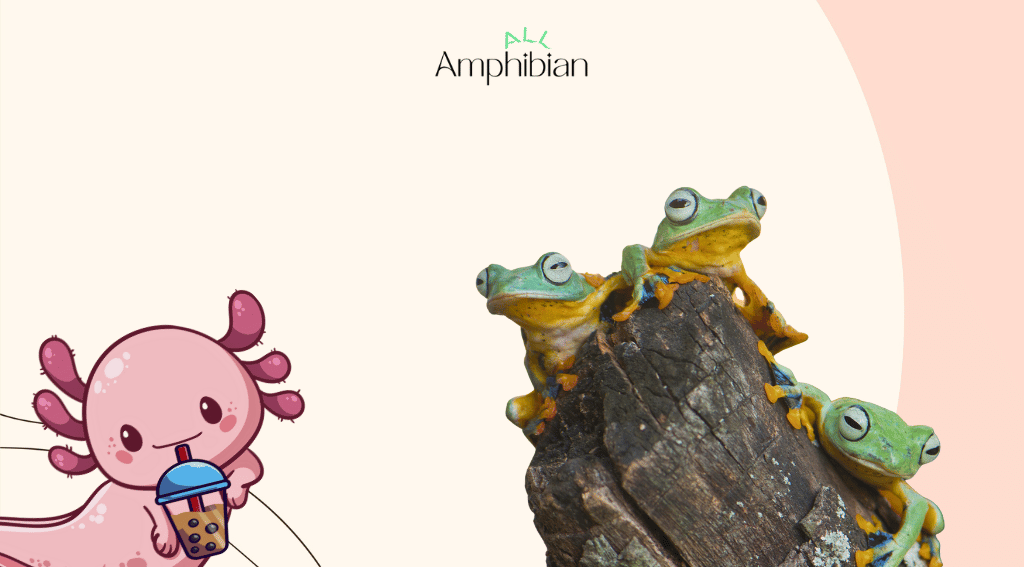
What do salamander nymphs eat?
The embryonic period of salamanders lasts about a week, and then they hatch from their eggs. Salamander eggs do not have a hard shell and are in a jelly state, so they are sensitive to dry air. After hatching, salamanders eat the remains of their eggs as their first food. They have a great appetite after a few days.
At this stage, baby salamanders are called salamanders nymphs. They are carnivorous from the very beginning of their lives and feed on small living microorganisms in the water. They grow fast, and most of their food is mosquito larvae; they eat plankton, aquatic insects, and any small living thing they can.
As they get bigger, their food also changes, and they feed on small worms, slugs, flies, mosquitoes, etc. You should also feed nymphs in captivity with daphnia, brine shrimp, and bloodworms. Of course, you should divide their food into smaller pieces so that they can eat it.
Nymphs take about two to four months to reach maturity and are very active during this time. They should be fed twice a day. Nymphs are very greedy. If you are keeping salamander nymphs, you should separate the smaller ones from the bigger ones because cannibalism is common among nymphs.
Some species of salamanders, such as tree salamanders and red salamanders, do not have a larval stage. They lay their eggs on land, and the baby salamanders are tiny copies of their parents when they are born and can move on land. They feed on small insects such as mosquitoes and flies.
What do frogs eat?
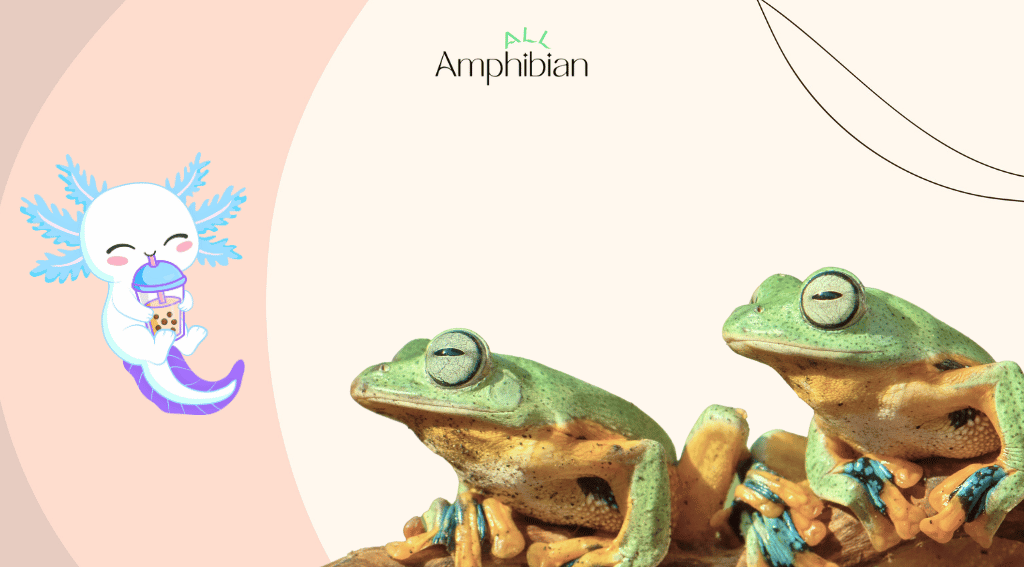
Frogs are the largest family of amphibians. They are also divided into two groups. The first group is frogs, which are semi-aquatic or aquatic and depend on water, and the second group is toads, which live on land and only return to water once a year to reproduce. The diet of frogs and toads is similar. Almost all frogs are carnivorous and feed on living organisms. Their food depends on their size and their living environment.
- Frogs:
Smaller frogs feed on smaller organisms, and larger frogs feed on larger organisms. But insects are the favorite food of all frogs. They feed on creatures such as insects, mollusks, worms, amphibians, crickets, spiders, etc. Larger frogs, such as the bullfrogs, feed on mice, snakes, turtles, fish, and even small birds.
Aquatic frogs feed on small aquatic organisms, insect larvae, and fish eggs. Tree frogs also feed on insects that live on plants, such as worms, mollusks, mosquitoes, aphids, and flies. Some species of frogs also do not have a lot of food variety and feed almost only on one type of food, such as ant-eating frogs that have become proficient in hunting ants and constantly feed on ants.
- Toads:
Because toads live on land, they usually feed on creatures that live on land. Most of their diet consists of insects, but like frogs, they eat any living thing that fits in their mouths. Toads are known for digging the ground. Their claws are suitable for digging the ground and can easily dig the soil.
Toads also feed on worms and underground creatures while digging. Toads and frogs lie in wait for prey. They wait motionless for the prey to approach them and then throw their sticky tongue toward the prey and hunt it.
Frogs and toads also have small teeth that are not suitable for chewing and cutting; that’s why they swallow their prey whole. Many frogs like Pacman frogs, are cannibals. Also, the South American tree frog is the only frog that is herbivorous and feeds on the fruits and seeds of trees.
What do tadpoles eat?
Most frogs and toads lay their eggs in water, and tadpoles are completely aquatic. They have gills, and when they hatch, they eat the rest of their eggs because it contains protein and provides them with the food they need for several days. Then they start eating algae.
At this time, the tadpoles are herbivores. For about two weeks, their diet consists only of plant material. Baby frogs grow and change quickly. And at the same time, their behavior and diet also change. At first, they are completely vegetarian, but as they grow, they also feed on protein and meat.
At this time, the tadpoles are omnivores. In addition to plant material, they also feed on plankton and little organisms. They also eat protein substances in water. Also, tadpoles feed on the remains of dead animals. Then they are almost carnivorous at the end of their larval stage.
At this time, they start hunting and feeding on insect larvae, small insects such as aphids and mosquitoes, and any animal they can swallow. Even if they cannot find other food, they feed on other tadpoles. Some people breed frogs, so they keep tadpoles. To feed tadpoles in captivity, the best food for the first two weeks is vegetables, lettuce, and cabbage.
Even algae is a good food for them. After the second week, you can also feed them with protein materials such as frog pellets. You can also use pieces of fish and chicken meat. For older tadpoles, you can also use live insects such as mosquitoes or crickets. You can also divide worms into smaller pieces and give them to the tadpoles.
Conclusion
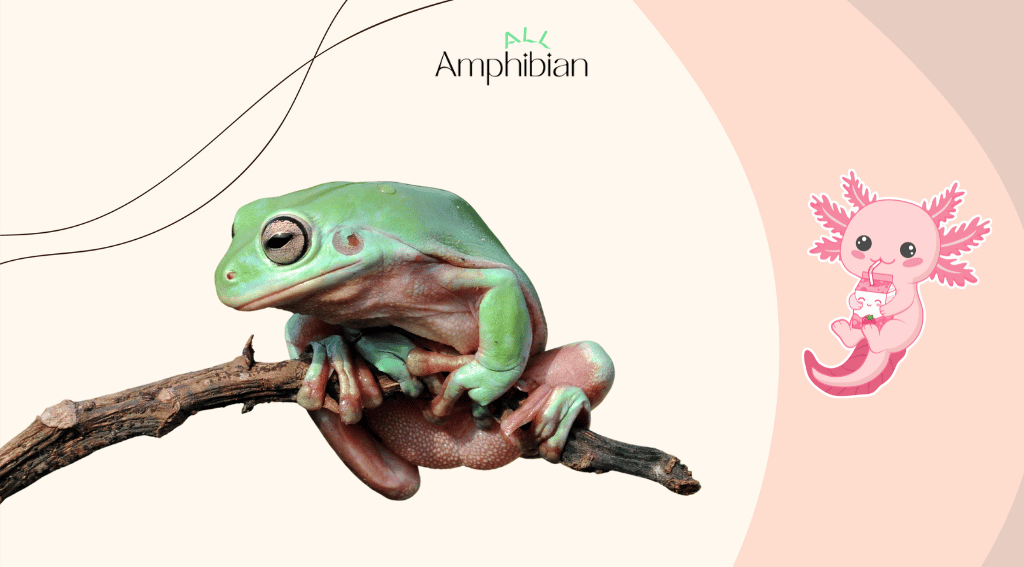
Amphibians are an interesting species of animals that have a two-stage life. The first stage of their life begins in water. Then they undergo many changes. Their lungs become complete, and their hands and feet appear. Then they can leave the water and live on land.
The largest family of amphibians are frogs and salamanders. Salamanders are also divided into terrestrial and aquatic categories. terrestrial salamanders are carnivores. Their food is insects and small living organisms. They hunt using their sticky tongue. Some of them follow their prey.
Water salamanders are also carnivorous and feed on aquatic organisms. They hunt using the suction power of their mouths. Salamanders eat any living creature that can fit in their mouths. You can feed salamanders in captivity with bloodworms, brine shrimp, crickets, and live foods.
They recognize anything that moves as food; that’s why they don’t feed on dead creatures. Salamanders, before they reach puberty called nymph salamanders. They are also carnivorous and feed on small aquatic organisms and protein substances, and when they grow older, they feed on insects and small aquatic animals.
Frogs are also the largest family of amphibians. They are also divided into toads and frogs. Toads live on land, and their food consists of insects, worms, and animals in the soil. Frogs also feed on insects and living creatures that they can hunt. Larger frogs feed on mice, snakes, amphibians, and birds.
At the beginning of their life, tadpoles are herbivores and feed on algae and aquatic plants. Then, after two weeks of age, they become omnivores and feed on protein materials. At the end of their larval life, tadpoles are carnivorous and hunt insects and insect larvae and feed on the remains of dead creatures.
Most amphibians have small teeth that are not suitable for chewing and cutting, and they use them to hold food. For this reason, they swallow their prey whole. Also, most of them cannibalize if they don’t have food.
In general, most amphibians are carnivorous after puberty and eat any living thing that fits in their mouth. Adult amphibians in captivity are fed with special pellets and live foods such as brine shrimp, various worms, crickets, etc. You should never feed them with plant material because it is dangerous for them.
FAQs
What do aquatic salamanders eat?
Aquatic salamanders are carnivorous and feed on worms, small fish, and small aquatic animals that they can catch. Also, some species feed on small amounts of aquatic plants. They hunt with the suction power of their mouths.
What do terrestrial salamanders eat?
Terrestrial salamanders are carnivores and feed on insects, worms, mollusks, spiders, etc. They hunt using their sticky tongue.
What do toads eat?
Toads live most of their lives on land. They are carnivorous and feed on insects and land animals they can eat.
What do frogs eat?
Adult frogs are carnivores. Most of their food consists of insects. Larger frogs also feed on snakes, mice, and birds.
What do salamander nymphs eat?
Salamander nymphs are carnivores and feed on protein materials, plankton, and small aquatic animals.
What do tadpoles eat?
Tadpoles eat the rest of their eggs after they hatch. They are herbivores in the first two weeks and feed on algae and aquatic plants. Then they become omnivorous and feed on protein materials. At the end of their larval period, they are completely carnivorous. They feed on dead creatures and mosquito larvae, etc.
What do amphibians eat?
Most amphibians are carnivores. Their main food is insects, but in general, they eat any living thing that can fit in their mouths. Cannibalism is also seen among them. They do not feed on plant material and it is dangerous for them.

